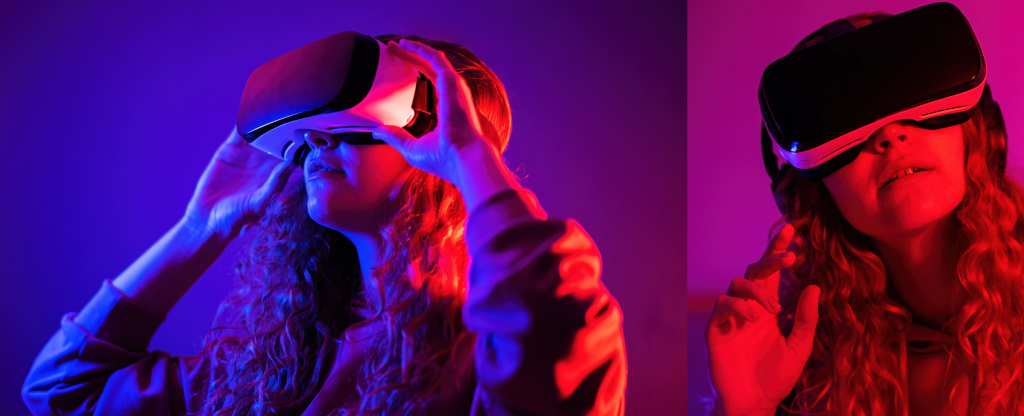Visual Search: The New Frontier Data Driven Marketing

Visual search is quickly reshaping how consumers find products online, transforming the way we engage with brands and make purchasing decisions. Instead of typing keywords into search bars, users can now upload or snap an image and let AI-driven algorithms do the rest. From Google Lens to Pinterest Lens and Amazon’s StyleSnap, visual search tools are becoming indispensable for sectors like fashion, home décor, and even automotive. They’re making product discovery seamless and intuitive, cutting through the noise of traditional searches and connecting users to exactly what they’re looking for. Think with Google Why Visual Search Matters in 2024 Today’s consumer expects instant gratification. They don’t want to scroll endlessly through search results—they want relevant, accurate results, fast. This is where visual search steps in, offering a more personalised, intuitive experience. Brands that embrace visual search are not only catering to user preferences but also capturing more sales opportunities. Imagine someone sees a pair of shoes they like in a magazine or while out shopping, snaps a photo, and is instantly directed to buy that exact item or a similar one from your brand. It’s frictionless commerce at its best. Visual search is particularly revolutionary in industries where aesthetics matter most—fashion, beauty, home decor, and even automotive. Pinterest has reported that visual search tools like Pinterest Lens drive significant engagement, with millions of users relying on image search to discover new products and ideas . Similarly, Google Lens has allowed users to find everything from a product’s purchase options to identifying species of plants, showing the broad applications of this technology . How Brands Can Capitalise on Visual Search For brands, integrating visual search isn’t just about adopting new tech—it’s about making sure that product visuals are on point. High-quality images, clear backgrounds, and a variety of angles are all critical to ensuring your products stand out. When someone snaps a picture and searches visually, the quality of your imagery can be the deciding factor between your product being picked or passed over. Additionally, companies should focus on optimising for visual search algorithms by ensuring images are tagged properly with alt-text descriptions and metadata. Platforms like Amazon’s StyleSnap are using AI to recommend fashion products based on images uploaded by users. If your brand is in fashion or beauty, it’s crucial to be featured in these visual search results . My Personal Take Visual search is thrilling, but it’s also a challenge. First impressions truly count here. If your product images are low quality, blurry, or unappealing, they simply won’t stand up in a visual search. I recommend focusing on top-notch visuals and regularly updating your image library to keep your products fresh and relevant. This tool can be a game-changer, but only if you invest in the right resources to stand out visually. Google Lens | blog.google Conclusion: Brands that embrace visual search technology will have a major competitive edge in 2024. The future of search is visual, and those who master this tech while maintaining a focus on high-quality imagery will win over the growing number of consumers who are looking for more intuitive and faster ways to shop. More For You b Byargyworld October 15, 2024 Brand-Experience,Customer-Engagement-Strategies,Digital-Marketing,Digital-Marketing-Innovations Visual search is quickly reshaping how consumers find products online, transforming the way we engage with brands and make purchasing decisions. Instead of typing keywords into search bars, users can… Read More Byargyworld October 15, 2024 AI and Automation in Marketing,AI-powered-marketing,Customer-Engagement-Strategies In October 2024, AI continues to revolutionise marketing, bringing personalisation to new heights. Brands are no longer just segmenting audiences—they’re predicting individual customer needs before… Read More Byargyworld October 15, 2024 AI and Automation in Marketing,AI-powered-marketing,Brand-Experience,Customer-Engagement-Strategies,Digital-Marketing-Innovations Storytelling has always been about creating connections, but in 2024, brands are elevating it with immersive technologies like augmented reality (AR) and virtual reality (VR). These tools are… Read More
AI-Driven Marketing: Personalisation At Scale

In October 2024, AI continues to revolutionise marketing, bringing personalisation to new heights. Brands are no longer just segmenting audiences—they’re predicting individual customer needs before those customers even express them. AI analyses massive datasets in real-time, tailoring emails, ads, and web content based on personal preferences and behaviour. This highly refined targeting makes for more efficient marketing, as it allows brands to cater to consumers in ways that feel unique and personal. However, alongside these exciting advancements, there’s an important issue—data privacy. With stricter global regulations, particularly with GDPR expansions and the emergence of California’s CPRA Revlitix Consumers are becoming increasingly concerned about how their data is collected and used. Brands must now strike a delicate balance between hyper-personalization and consumer trust. Real-Time Personalisation in Action The most successful brands are those integrating AI-driven personalisation seamlessly into their marketing strategies. For example, Netflix and Amazon continue to lead the way with recommendation algorithms that constantly learn and predict what users will want next based on viewing or purchasing history. This goes beyond traditional personalization—these platforms are predicting behaviours, presenting options before customers even realise what they want Revlitix | Onimod Global AI-powered personalisation is also making waves in email marketing. Tools like Mailchimp and HubSpot now enable marketers to send emails customised down to the individual’s buying habits, geographical location, or even their browsing history. Personalised subject lines and dynamic content based on real-time data are driving open rates and conversions. The Intersection of AI and Data Privacy As AI continues to evolve, one key challenge remains: maintaining customer trust in the face of growing privacy concerns. With new laws like the European Union’s Digital Services Act (DSA), brands must be transparent about their data practices. A 2024 report from McKinsey reveals that businesses failing to manage data privacy issues could see a 20% increase in marketing costs just to maintain the same level of engagement Revlitix For brands, this means implementing clear, accessible privacy policies while offering users more control over their data. Trust and transparency will be the deciding factors in whether consumers embrace these personalised experiences or shy away from them. My Personal Take While AI is undoubtedly powerful, it should never replace the human element in marketing. I always suggest that brands combine AI insights with personal touchpoints to avoid becoming too mechanical or impersonal. AI can analyse and predict behaviour, but it’s the human connection that creates lasting loyalty. I also believe that in the near future, AI will go even further, integrating with residential robots and smart assistants. Imagine a world where your AI assistant not only predicts your shopping needs but also interacts directly with your household robots to fulfil them—ordering groceries, managing home entertainment, and even recommending health services. It’s a convenience-driven world, but with great power comes the responsibility to let consumers choose how much control they want to give over their personal preferences. More For You Byargyworld October 15, 2024 AI and Automation in Marketing,AI-powered-marketing,Customer-Engagement-Strategies In October 2024, AI continues to revolutionise marketing, bringing personalisation to new heights. Brands are no longer just segmenting audiences—they’re predicting individual customer needs before… Read More Byargyworld October 15, 2024 AI and Automation in Marketing,AI-powered-marketing,Brand-Experience,Customer-Engagement-Strategies,Digital-Marketing-Innovations Storytelling has always been about creating connections, but in 2024, brands are elevating it with immersive technologies like augmented reality (AR) and virtual reality (VR). These tools are… Read More Hello world! Byargyworld September 30, 2024 Uncategorized Welcome to WordPress. This is your first post. Edit or delete it, then start writing!… Read More
The Rise of Immersive Experiences

Storytelling has always been about creating connections, but in 2024, brands are elevating it with immersive technologies like augmented reality (AR) and virtual reality (VR). These tools are transforming passive narratives into interactive, story-driven experiences thatcustomers can actively participate in. The integration of these technologies not only enhances engagement but also allows brands to build deeper, emotional connections with their audience. Immersive Storytelling in Practice A perfect example of this is the fashion industry, where VR has enabled customers to step into virtual fashion shows and even try on digital collections in the metaverse. Balenciaga, for instance, has already begun experimenting with digital-only fashion lines that customers can “wear” in VR environments Upshot This interaction builds a direct emotional connection between the consumer and the brand. Similarly, real estate developers are leveraging VR to allow potential buyers to explore homes long before they are physically built. This kind of experience provides a 360-degree tour of properties, helping buyers visualise their future living spaces, down to the smallest details like floor tiles and kitchen finishes. It creates an emotional bond and speeds up decision-making by offering a tangible, immersive glimpse into their potential lifestyle Upshot AI-Driven Personalisation: Storytelling for One Coupled with AR and VR is AI-driven personalisation, which tailors each storytelling experience to individual users. AI is used to analyse user behaviour, preferences, and previous interactions, allowing brands to create highly relevant narratives. Whether it’s personalised virtual shopping experiences or targeted storylines in video games, this technology ensures no two customer journeys are alike. This shift is particularly important as consumer expectations continue to evolve. According to a recent survey, 76% of consumers expect companies to understand their unique needs Revlitix With AI-driven storytelling, brands are meeting these demands head-on by providing custom experiences that feel deeply personal and engaging. Why Immersive Experiences Matter in 2024 As consumers become more comfortable with technology, immersive experiences are increasingly seen as not just “nice-to-haves” but essential tools in modern marketing. AR and VR allow brands to go beyond traditional advertising methods, creating memorable, interactive experiences that resonate on a deeper level. In an era where attention spans are shrinking and the digital landscape is becoming more saturated, standing out requires something more than just good copy and visuals—it demands emotional engagement. From immersive brand experiences like Nike’s interactive AR sneaker launches to educational virtual museums, storytelling in 2024 is about drawing consumers into a brand’s world and keeping them there. By blending technology with human-centric storytelling, brands can connect with consumers in ways that feel personal, emotional, and impactful. My Personal Take As someone who believes in balancing creativity with a human touch, I see this as the perfect opportunity to blend tech with empathy. Just don’t let the tech overshadow the core emotional appeal that makes your story relatable! While it’s exciting to explore new technologies, it’s important to remember that the heart of great storytelling is emotional connection. If the tech becomes the star, you lose that vital human element. I believe immersive technology is a tool that will be more important than ever in marketing as consumers grow increasingly comfortable with it. Brands that use it thoughtfully, weaving in personalisation and emotional storytelling, will undoubtedly thrive. Section Title Byargyworld October 15, 2024 AI and Automation in Marketing,AI-powered-marketing,Brand-Experience,Customer-Engagement-Strategies,Digital-Marketing-Innovations Storytelling has always been about creating connections, but in 2024, brands are elevating it with immersive technologies like augmented reality (AR) and virtual reality (VR). These tools are… Read More Hello world! Byargyworld September 30, 2024 Uncategorized Welcome to WordPress. This is your first post. Edit or delete it, then start writing!… Read More